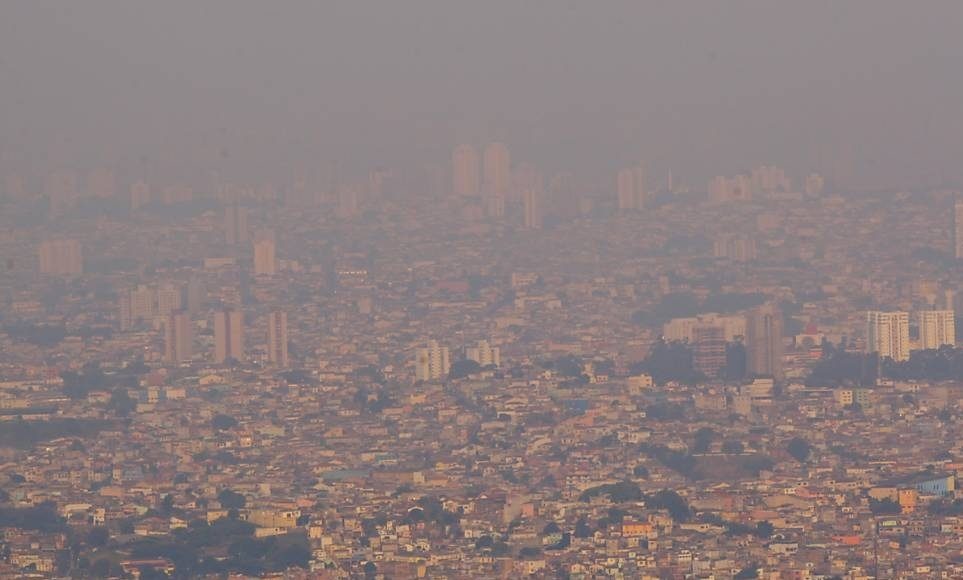Pollution is choking São Paulo
77% of emergency medical consultations in São Paulo are for respiratory problems. São Paulo is sick from pollution as traffic increases and becomes slower, exposing people to damaging particles for longer periods, keeping them unhealthily immobile and more stressed. But when residents seek treatment for problems generated by the city’s rush, they find that the health service itself is sick. This article by Katia Mello, of LAB partner,
A Pública, analyses the vicious circle.
Europeans with a vision of Brazil as a tropical paradise are surprised to find that large parts of Brazil have a winter. This includes its biggest city, São Paulo, where temperatures can fall to 11
o C, and rain adds to the chill. A blanket of cloud traps the pollutants close to the ground.
In addition to the traffic, São Paulo still has industry, 47,000 industrial concerns, and around 100,000 commercial establishments. In the last decade the population increased by 12%, but the vehicle fleet grew by 65, and reached a total in March 2011 of 7 million – one vehicle for every 1.5 people.
This avalanche of cars in the streets is causing daily tailbacks of over 100km at peak hours. The vehicles emit polluting gases that can cause respiratory diseases, from rhinitis and sinusitis to pneumonia. Professor Paulo Saldiva, head of the pathology department at the University of São Paulo, told
A Pública that despite improved controls on vehicle emissions in the last decade, the people of São Paulo are more exposed to pollution because they spent more time in traffic jams. “If a person spends two hours breathing in polluting particles in a traffic jam, this is the equivalent of smoking at least one cigarette a day.”
The health service is sick
São Paulo is the richest city in Brazil, but the health system is rickety. Hospitals lack beds, waiting times are long, there is a shortage of doctors, equipment not working, diagnoses are vague – all these are common complaints in the city. Another factor that is increasing the demand on the health system is the aging of the population. In the last decade the number of São Paulo residents aged over 60 increased by over 35%, and now stands at over 1.3 million. On the eve of this October’s local elections, health was voted the most serious problem for the administration, ahead even of crime.
Even the government has recognised the inadequacy of its national health service, the SUS. In a performance evaluation published in March 2012, where 7 was the ideal score, the Brazilian average was 5.47. São Paulo scored 6.21, followed by Brasília (5.09) and Rio de Janeiro (4.33).
The impact of the private health market
Experts are unanimous in pointing to a lack of resources as the key problem. Overall Brazil spends 8.4% of GDP on health, which is excellent, more than the World Health Organisation’s recommended 7%. But there is a problem with the distribution of this 8%: 60% goes to the private sector, to cater for the 46 million people with private health insurance, while 40% goes to pay for the health care of the 144 million Brazilians cared for by the national health service: they receive only 3.7% of GDP.
The existence of a lucrative market in health care also has a distorting effect on provision. The number of doctors is increasing, but only 20% work in the national health service, largely because of the low wages and poor working conditions. Doctors and hospitals also tend to be concentrated in the richer areas of the city, such as Pinheiros or Vila Mariana. On paper, the ration of hospital beds to population in São Paulo is very good, 2.6 per inhabitant – the standard is 2.5 – but in the central area of Consolação there are 40.06 beds per 1000 inhabitants, 26 districts have no beds at all. As in other areas of Brazilian life, health is a story of inequality.
